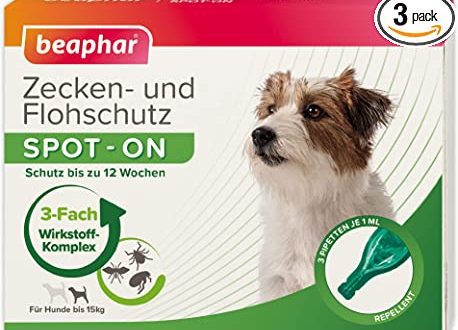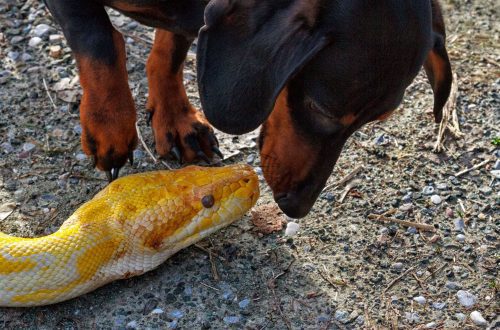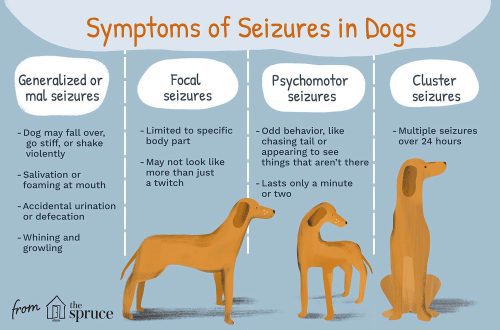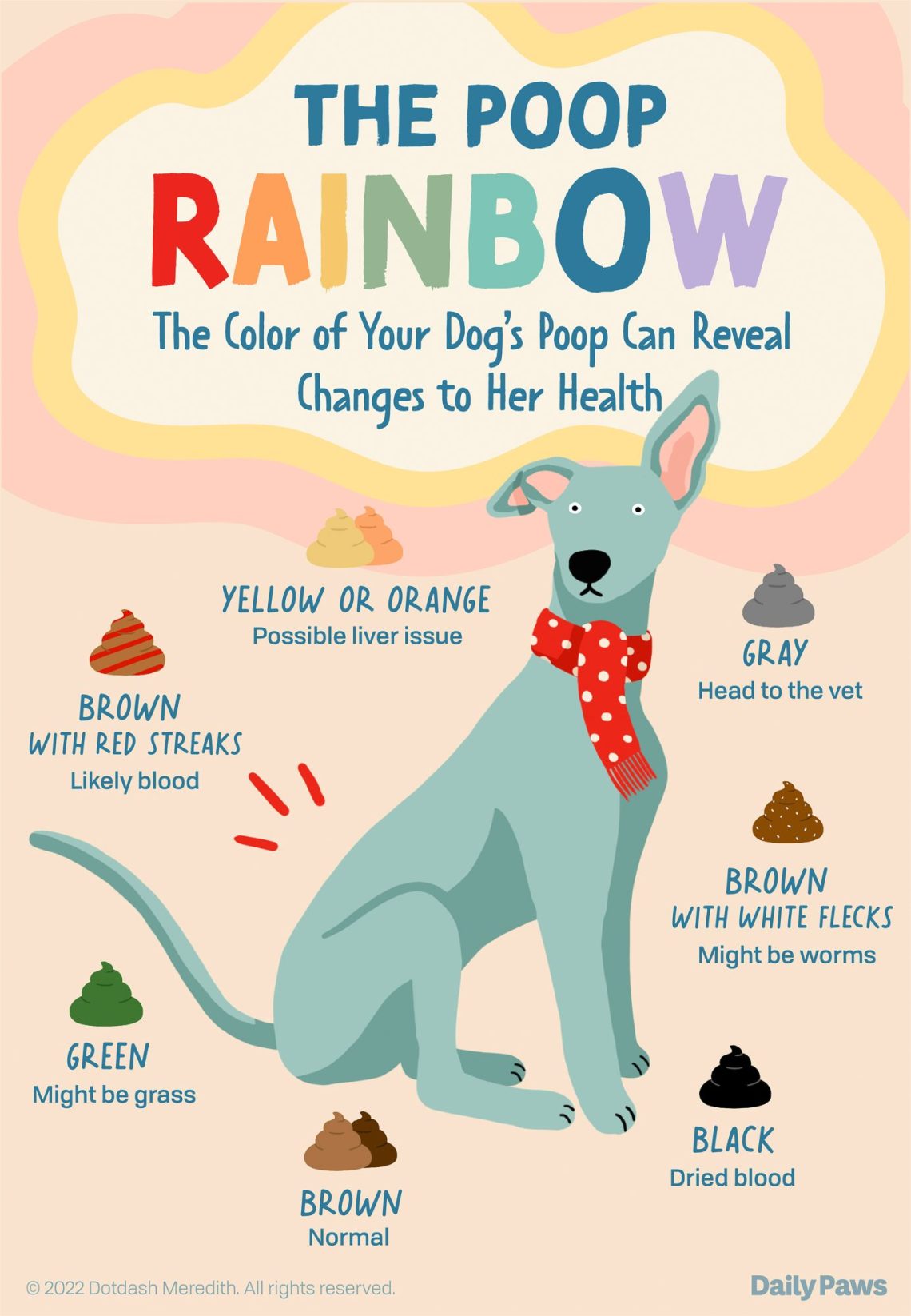
Diarrhea in a dog – causes and what to do with diarrhea?
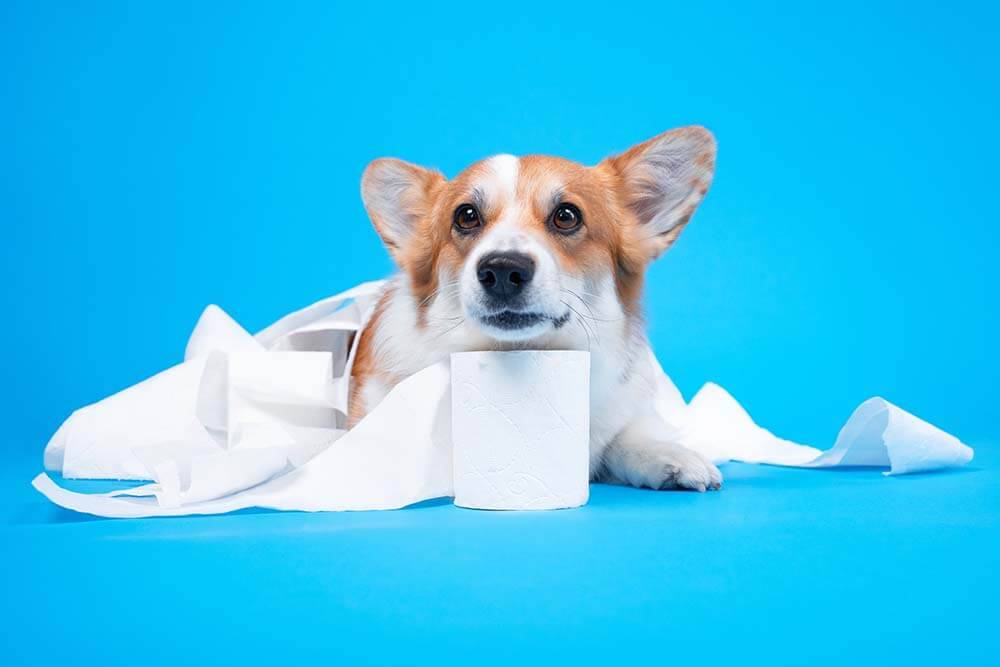
Contents
Causes of loose stools in dogs
There are significant differences between how dogs and humans digest food.
For example, the shape of a person’s jaw and saliva enzymes will begin to break down a piece of food already in the mouth. Dogs have mouths and jaws designed to tear and crush food. Their salivary enzymes basically destroy bacteria.
Food travels rapidly down the dog’s esophagus and into the stomach in chunks, where most of the digestion takes place. Under normal circumstances, the time to move food from the mouth through the small and large intestines should be less than 10 hours. As a result, dense feces are formed.
Many causes can disrupt this well-balanced system, causing diarrhea in a dog.
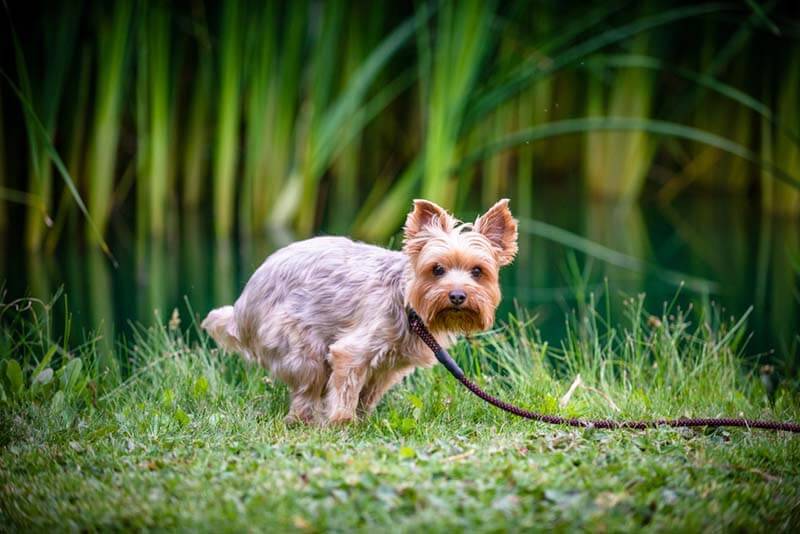
Garbage toxicosis and poisoning
The most common cause of diarrhea is that the dog picked something up, pulled it off, someone fed it from the table. Diarrhea begins abruptly, the stool does not change its color, the consistency usually resembles porridge. The stomach growls, and the dog has a constant urge to defecate – tenesmus.
Change in diet
Even the highest quality feeds can cause nutritional stress and gastrointestinal upset when switched to them abruptly. Well, feed of poor quality and with the right transition can cause diarrhea. As a rule, the stool remains brown, moderately hard. The dog has no other complaints.
Food intolerances and allergies
The intestines may not have enough enzymes to digest a particular type of food (protein, for example), and because of this, the animal develops diarrhea. Or the pet has an allergy to food components, and the body responds to this with an immune response, one of the symptoms of which may be diarrhea.
vermin
Worms, Giardia, Trichomonas, Cryptosporidium and many other parasites can live in the intestines and disrupt its work. Unfortunately, not everyone can get rid of worms with a pill, so often dogs remain their carriers for a long time.
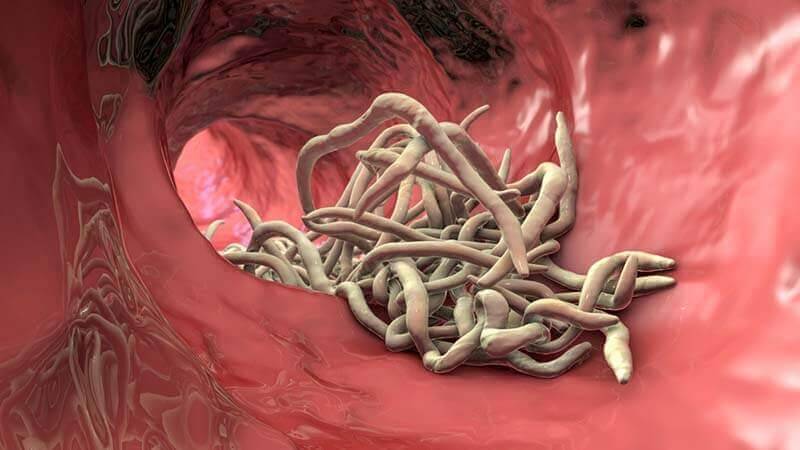
Viral and bacterial infections
Viruses and bacteria can also infect the walls and villi of the intestine. This is manifested by profuse, that is, profuse, fetid diarrhea, high fever, dehydration and other unpleasant symptoms. Often young dogs and puppies can die from such diseases, for example, from parvovirus enteritis.
Foreign body
If a pet swallows a foreign object, and it comes out of the stomach and gets stuck in the intestines, then problems with the stool cannot be avoided: diarrhea with bloody water, a very painful stomach and the rapid development of symptoms.
Stress
Some dogs react to stress with diarrhea. Trimming the claws, the absence of the owner, the toy is lost – any little thing that upsets the pet can cause loose stools.
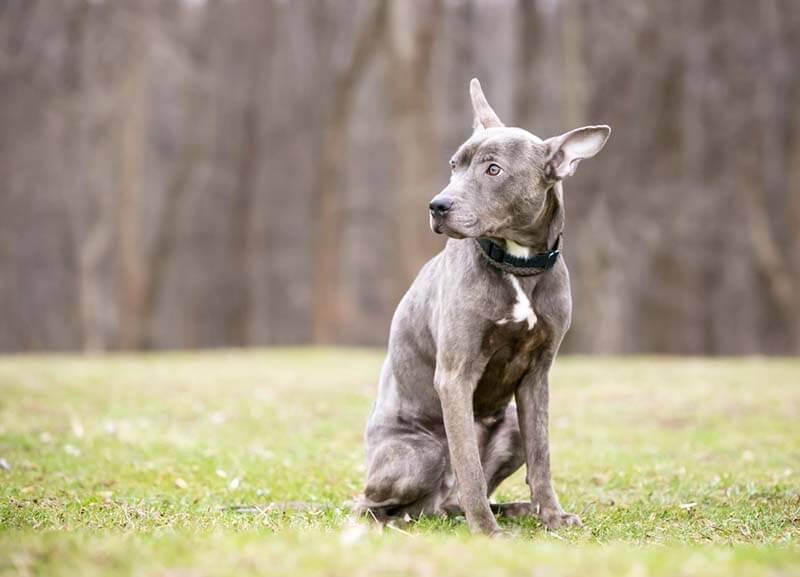
Taking medication
Some medications can cause diarrhea as a side effect. Information about this can usually be found in the instructions. The intestine is the organ where feces are formed. This is only part of a well-coordinated system of the digestive tract, where they all depend on each other. Therefore, if there is a failure in any organ responsible for the digestion of food, a stool disorder can occur.
Oncology
Colon cancer is relatively rare in dogs compared to other causes. The most common type is lymphoma. The disease is manifested by indigestion, frequent relapses and weak dynamics during treatment.
Additional symptoms
Diarrhea in a dog rarely occurs on its own, usually accompanied by additional symptoms that worsen the condition and require control. It is important to notice these symptoms, as they can often help a doctor make a diagnosis while gathering information about the disease.
Dog diarrhea and vomiting
Diarrhea and vomiting in a dog is an occasion for immediate medical attention. This indicates the development of pathological processes in the stomach and intestines at the same time. Of course, a single vomiting does not mean that you need to sound the alarm, but with repeated vomiting of food, foam, yellow, you can talk about the possible development of viral and bacterial infections, poisoning, or the presence of a foreign body.
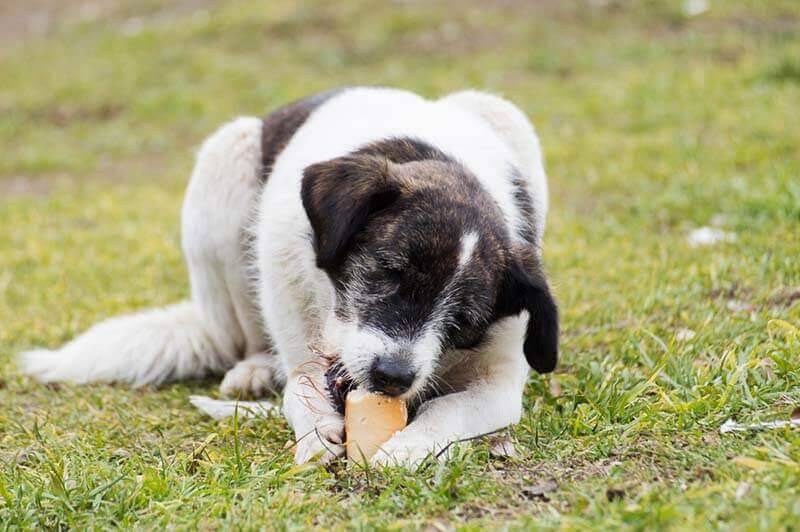
Blood
The blood in the stool may be overcooked and turn black. Or maybe fresh – drops of scarlet blood at the end of a bowel movement. This means that the large intestine is inflamed. Blood accompanies all possible colitis that develops as a result of nutritional stress or parasitic invasion. With such symptoms, you should immediately consult a doctor.
Diarrhea with mucus in a dog
When a dog has diarrhea with mucus, you should pay attention to the condition of the large intestine. Mucus is produced to lubricate the intestines and move the feces, so its presence in the stool is a variant of the norm. However, if a dog has loose stools with mucus, this may also indicate the presence of worms, Giardia, or feeding poor-quality food.
Diarrhea of an unusual color
Color can tell a lot about what’s going on inside your dog’s intestines. Chocolate brown is normal, while orange diarrhea, yellow diarrhea, green diarrhea, or gray may indicate problems with the liver, gallbladder, or pancreas. Black loose stools in a dog are a very serious symptom and may indicate internal bleeding.
Yellow diarrhea. Often, with the development of inflammatory processes in the small intestine and increased peristalsis in this section, the dog begins to develop yellow diarrhea. The stool is colored by bilirubin (a brown component of bile) produced in the liver. Under normal conditions, it breaks down and stains the feces brown. Acute liver disease will also lead to bright colored stools.
Diarrhea orange. It can occur for the same reasons as yellow, as well as with regular eating of too fatty foods.
Green diarrhea. Green diarrhea in dogs is also caused by bilirubin. If putrefactive microflora lives in the intestines, then bilirubin is oxidized to biliverdin (green bile pigment) and turns green, coloring the feces green.
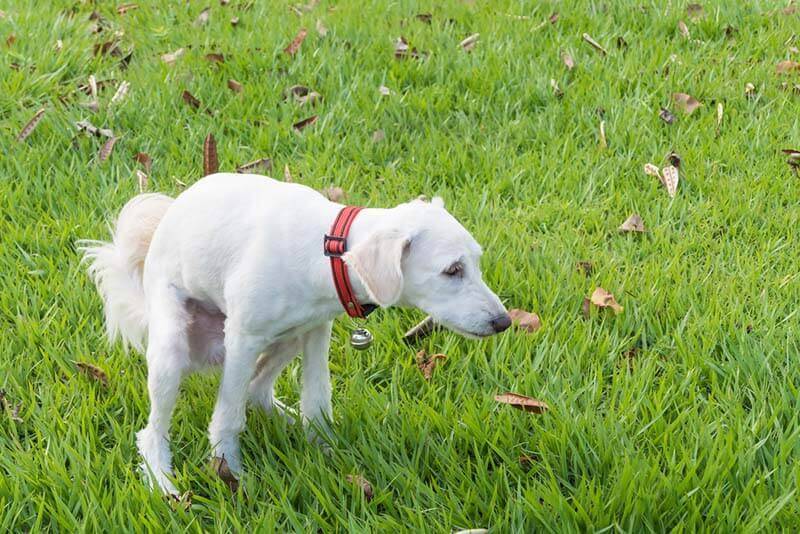
Black diarrhea. If your dog has black diarrhea, you should immediately consult a doctor. Black stool indicates that it contains digested blood. With the development of bleeding in the upper gastrointestinal tract (stomach, small intestine), the blood passes almost all the way through the intestines and is partially digested. As a result, we do not see it in scarlet feces, but we observe black feces, or, as it is called in the language of veterinarians, melena.
Diarrhea white and gray. Above, we have already figured out that bilirubin gives the normal color to the feces. If the bile ducts are blocked (by a stone, tumor, or parasites), then the color of the stool will turn white. Or if the dog eats fatty foods, the fats are not digested and are excreted in the feces.
And, of course, food can change the color of feces: beets paint it red, carrots orange, chalk and bone meal white and gray.
Temperature increase
Diarrhea, as a rule, accompanies the development of the inflammatory process, which means that the pet may have a fever. Viral diseases are always accompanied by an increase in temperature and then, in the absence of correct treatment, its sharp drop.
Abdominal pain and flatulence
Excess gas formation, spasms lead to abdominal pain and bloating. These symptoms often accompany poisoning, eating foreign bodies, and prolonged infections. The dog refuses to walk, whines, takes a forced pose. The manifestation of flatus is inevitable (farts).
Refusal to eat
Any of the additional symptoms or causes of diarrhea can affect your appetite. Refusal to eat is a good reason for urgently seeking medical advice.
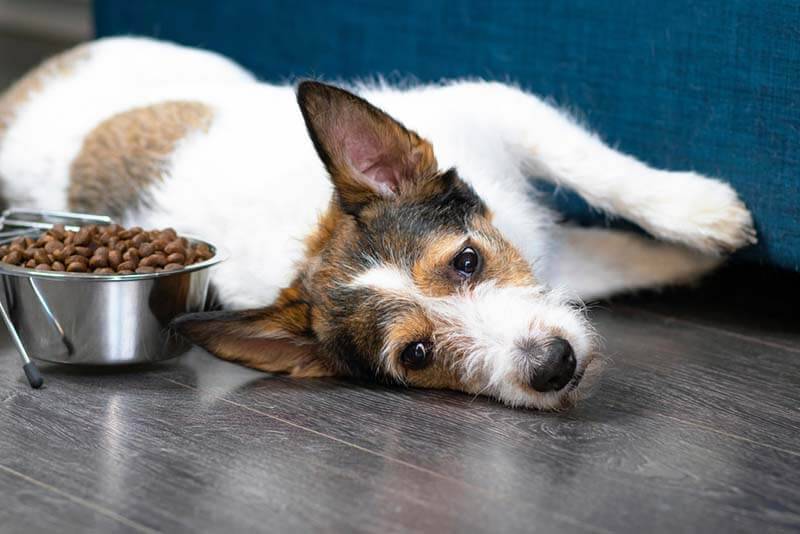
What to give a dog for diarrhea?
Diarrhea can lead to dehydration, so be sure to give your pet access to water at all times.
At home, a dog with diarrhea can be given the following medicines:
Probioticsthat aid digestion.
OTC medicines for people may also be effective for diarrhea but should be given with caution. And you should always consult your veterinarian before using them. These drugs include: Smecta or Polysorb (dilute according to the instructions and drink 1,0 ml each), Mebeverine (7 mg / kg 2 times a day), Loperamide (1 capsule per 20 kg, no more than once). Usually doctors suggest trying Smecta or Polysorb and, if they do not help, move on to another. Give drugs inside, orally. I will tell you more about them later.
Rice water. Boil the rice in plenty of water, remove the grains and offer the dog the white broth that remains.
Plain white rice.
Pumpkin effective for both diarrhea and constipation. If you don’t have pumpkin, pumpkin powder made especially for pets is a good alternative.
Simple protein sources such as яйцо or a hen (without skin).
Herbs, such as fennel, may have gut-soothing properties.
Specially formulated dog food: Some manufacturers offer ready-made diets that can soothe bowel problems.
Methods that work for one dog may not work for another, so you may need to experiment to find the right remedy.
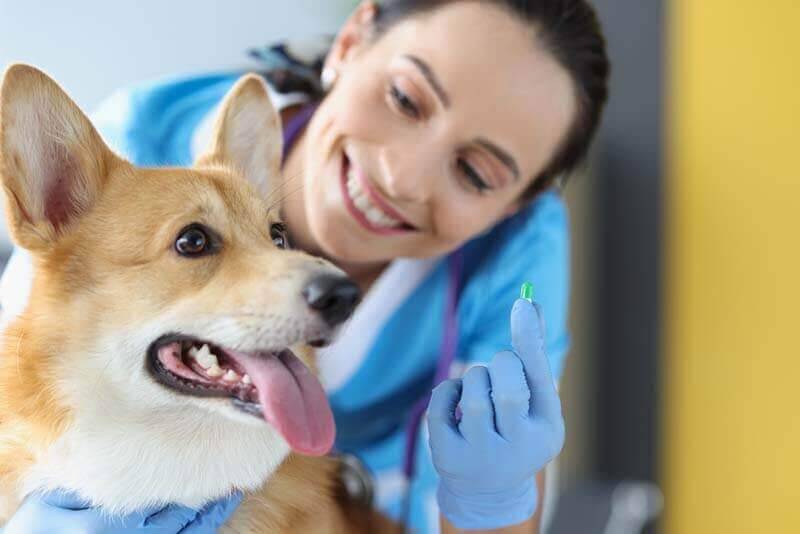
Diagnostics
The color, shape, and consistency of stool will help you and your veterinarian figure out what’s wrong when your dog has diarrhea.
As disgusting as it sounds, it’s important that you take a close look at your pet’s feces if they have diarrhea so you can tell your veterinarian as much detail as possible. We discussed above that the color of diarrhea can indicate a number of pathologies, for example, black diarrhea definitely requires urgent admission. Armed with this knowledge, the veterinarian will be able to tell you whether to schedule an appointment and examination, or if you can be treated at home.
In order to determine the cause of diarrhea, it is necessary to conduct laboratory tests and visual diagnostics.
First of all, an ultrasound examination of the abdominal organs is carried out, it allows you to determine in which part of the intestine inflammation occurs, and sometimes the cause – for example, a foreign body, helminths and tumor processes are often visible. Sometimes an x-ray may be required as an additional visual diagnosis.
Blood tests – clinical and biochemical – will assess the degree of inflammation, the functional capacity of organs, and whether there are signs of anemia and protein starvation, which is often due to loss of nutrients in loose stools.
If you suspect a viral infection, you will need to donate feces or blood for viruses.
If the presence of parasites (helminths or protozoa) is expected, it is necessary to pass the feces in a special preservative, it is collected for several days in a small portion from each bowel movement, and then the laboratory assistant looks for helminth eggs in this solution.
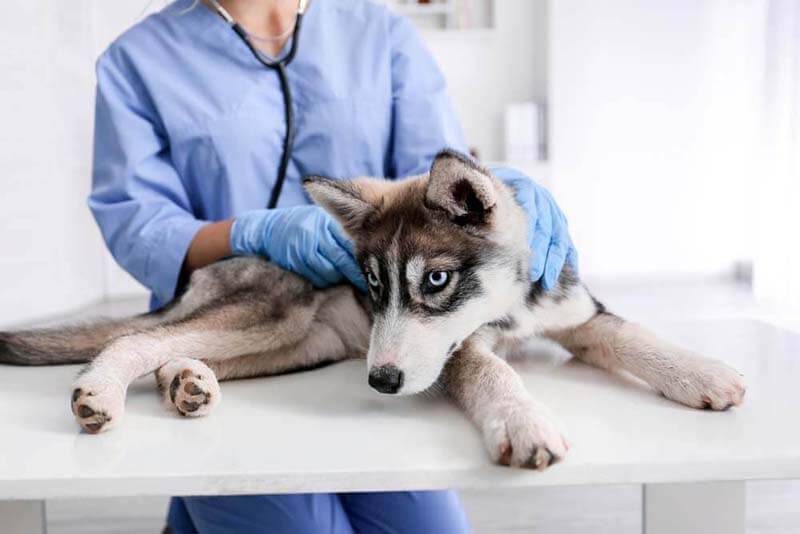
There are specific tests that allow you to evaluate the function of other organs, as a result of the pathology of which there may be changes in the stool – for example, with exocrine pancreatic insufficiency, the feces become white, and in order to make this diagnosis, it is necessary to pass the feces for the determination of pancreatic enzymes. These are non-routine studies, and they are prescribed by a doctor strictly after a general examination – ultrasound and blood tests.
The last stage of diagnosis for bowel diseases is endoscopy and colonoscopy – examination of the abdominal organs with the help of a camera. The camera (endosko) can be inserted into the intestine or into the abdominal cavity, thus examining the organs both outside and inside. Together with the camera, the surgeon can introduce a manipulator to take material for a histological or cytological examination of the intestinal wall. During an endoscopy, the surgeon removes a small portion of the intestine and examines the tissue and cells in the laboratory to determine the presence and type of tumors.
Treatment of loose stools in dogs
Diarrhea in a dog is treated based on the cause and the nature of the problem. As a rule, treatment is divided into two stages: symptomatic therapy, which fixes the stool and stops tenesmus, and therapy aimed at eliminating the cause. And diarrhea with tenesmus is a condition where a dog goes to the toilet repeatedly in a short period of time in a liquid way, and sometimes bowel movements are generally ineffectual. With diarrhea without tenesmus, the animal empties 1-2 times a day as usual, but the stool is not formed.
In order to fix the stool, medications are often used – Smektu and Polysorb sorbents.
To relieve pain and frequent urge to defecate, antispasmodics are used that act on the smooth muscles of the intestine – Mebeverine or Trimebutine. To quickly fix the stool, you can use the drug Loperamide, but you should be careful with it, it is not recommended to take it more than once. Loperamide reduces the tone and motility of the intestine, but with prolonged use it can aggravate the course of the disease.
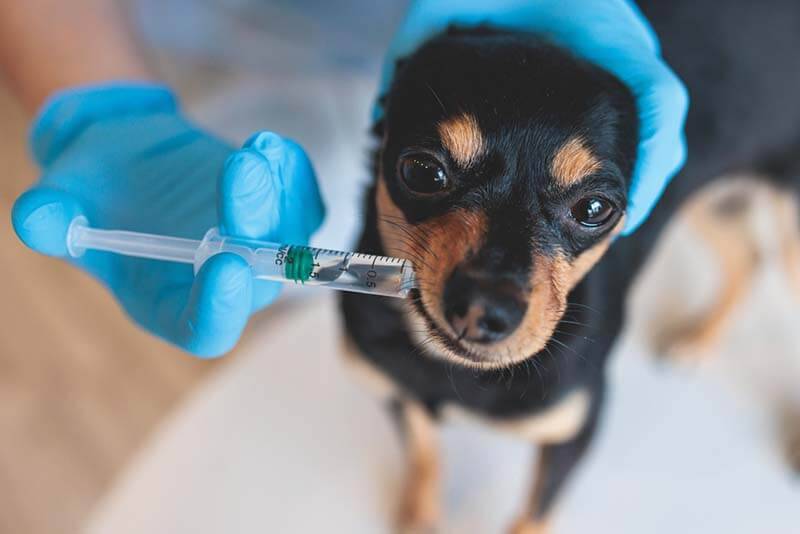
In order to cure the causes, apply:
With helminthic invasion and Giardia – therapeutic deworming schemes with preparations containing fenbendazole under the supervision of a physician.
If the cause is viral or bacterial infections, the therapy is very extensive: antibiotics, antipyretics, often require the use of drips to control dehydration.
Allergies and food intolerances require very strict dietary control and special diets – for example,
With food stress, it is enough to relieve symptoms and exclude eating food debris.
In case of poisoning, the treatment regimen depends on the poison – it can be an antidote (antidote) and symptomatic therapy, or only symptomatic if there is no antidote. As a rule, it includes advanced monitoring of the state of the body, abundant intravenous infusions and sorbents.
If the cause of diarrhea is a foreign body, then it must be removed, surgically or endoscopically (using a camera inserted into the stomach through the mouth and a manipulator that captures the foreign body).
Medicines that cause side effects in the form of diarrhea do not require special therapy – it is necessary to cancel the medicine and start taking antispasmodics and sorbents.
Neoplasia is one of the most difficult diagnoses to treat. His treatment regimen may include: removal of the tumor, chemotherapy, radiotherapy, and symptomatic therapy to maintain the body. However, unfortunately, cancer can be incurable, and the animal dies.
What to feed a dog with diarrhea?
Loose stools in dogs are often the result of improper feeding. Therefore, it is important during an attack of diarrhea not to aggravate the condition by continuing to feed the dog food garbage.
It is important not to try to change your diet drastically, especially if diarrhea has already begun. Even the correct and special diet can be nutritional stress and aggravate the condition of the dog. Therefore, it is necessary to switch to any diet gradually, over 5-10 days.
If your dog is on a natural diet, opt for low-fat meats, opting for sirloin (chicken, turkey) and rice.
If the dog is on ready-made food, then choose food for the digestive tract from your company. Most feed manufacturers have them, for example Hill’si/d, Royal Canin Gastro Intestinal, PurinaEN, Farmina Gastrointestinal. If you do not change the brand of feed, then you can immediately give a full portion. If the feed company changes, the transition is carried out gradually.
Access to water must be constant. Feed your dog often and in small portions – 4-6 times a day. The diet must be followed from 10 days to 4-6 weeks, depending on the diagnosis and condition of the dog.
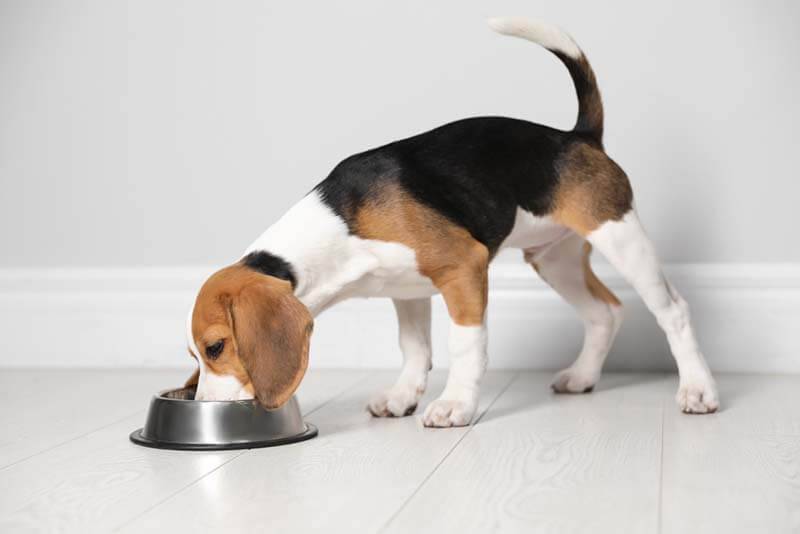
Prevention
Diarrhea in dogs is easier to prevent than to treat. In order to encounter this trouble as little as possible, it is enough to follow simple rules for keeping and feeding the dog.
Treat for worms at least once every 3 months. If the dog eats grass, drinks water from a puddle, then it is possible more often. It is also important to exclude flea parasitism on the dog – also carry out treatments.
Don’t change your diet often.
Pick one type of food, one brand of food, and stick with it without trying to diversify your dog’s diet. If, nevertheless, there is a need to change the diet, do it gradually, mixing a little new food into the old food daily.
Vaccination will protect your dog from viral infections. An adult dog should be vaccinated every year with a combination vaccine.
Avoid picking up on the street. If the dog is not amenable to education – wear a muzzle on walks.
Diarrhea in dogs
The main reasons why a dog has loose stools are: improper diet, viral diseases, bacterial infections, parasites, diseases of the digestive tract and tumors.
The diagnostic plan is to consistently exclude the causes of the disease from the most common (food reaction) to the rarer ones (neoplasia). They start with standard studies – ultrasound of the abdominal cavity and blood tests. After that, additional studies may be ordered.
Treatment of diarrhea in a dog requires an integrated approach – the removal of symptoms and the elimination of the cause of the disease. Most often, it is enough to give sorbents (Smecta or Polysorb) to cope with the symptoms.
When the cause is eliminated, the prognosis for recovery is favorable. With prolonged diarrhea, irreversible changes in the digestive tract can develop.
Treat your pet regularly for parasites, vaccinate your pet, and follow dietary guidelines to minimize recurrence of loose stools.
Answers to frequently asked questions
Sources:
Chronic Diarrhea in Dogs — Retrospective Study in 136 Cases M. Volkmann, J.M. Steiner et al Journal of Veterinary Internal Medicine 2017
Kantere M.C. Diagnostic performance of a rapid in-clinic test for the detection of Canine Parvovirus under different storage conditions and vaccination status / M.C. Kantere, L.V. Athanasiou, V. Spyrou, C.S. Kyriakis, V. Kontos, D.C. Chatzopoulos, C.N. Tsokana, C. Billinis // J. Virol. Methods. – 2015.
Wingfield Wayne. Secrets of emergency veterinary care. Cats and dogs, 2000.



